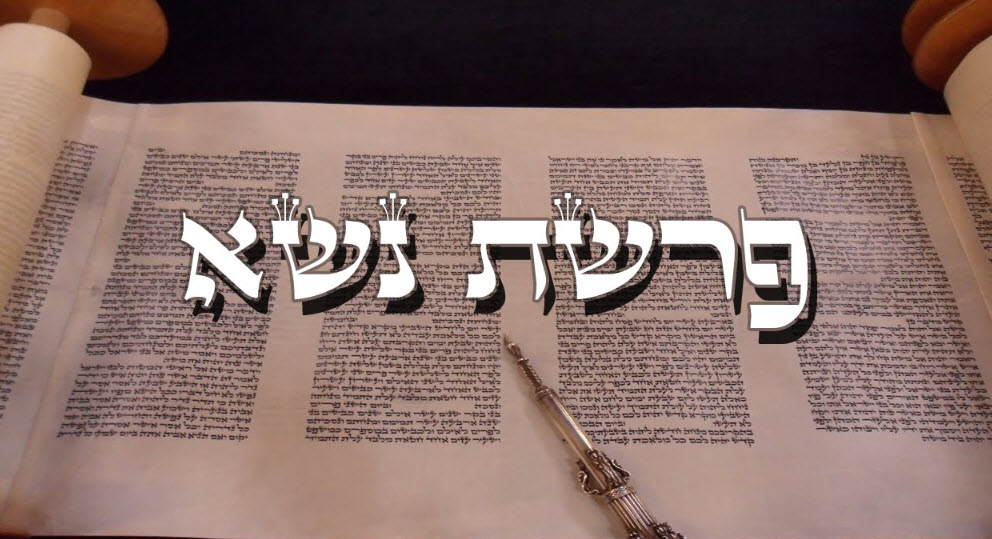This week we read the longest portion of the entire Torah: Parashat Naso, which totals an incredible 176 verses. While Naso certainly contains a variety of topics within its expansive framework, a sizable share of it actually focuses on one particular idea.
B’nei Israel, at God’s behest, built the Mishkan, a temple in which they would offer sacrifices and perform other specific, holy rituals. The Mishkan presented an unparalleled opportunity for service of God and spiritual growth for the Jewish People; the divine nature of the work and the continual contact with holiness affected B’nei Israel on a spiritual level, and the scrupulous attention to detail demanded in the Mishkan construction and services humbled the people and honed their character.
Especially considering that the nation was to travel for forty years in the Sinai Desert, God designed the temple to be mobile, with an elite cadre of Levites charged with its assembly, disassembly, and transport at every station of the nation’s travels. Understandably, the Mishkan was always situated at the inner core of B’nei Israel’s camp; the temple was a focal point for all.
We can hardly imagine the profound thoughts and the lofty emotions which that spiritually elevated generation invested into the services in the Mishkan- and, certainly, into the very construction of this holy edifice. The actual inauguration of the Mishkan, leading up to its first full-time usage, served as a consecration of sorts; the initial sacrifices offered therein would technically serve to sanctify the structure, while, on a more practical level, also highlighting and establishing the people’s devotion to God. The opening ceremonies, so to speak, were to be conducted by the leaders of every tribe, as these princes, the Nesi’im, brought special sacrifices in honor of the event.
In fact, each of the twelve men brought identical offerings*
Even without delving into the ceremonies’ details for now, we intuitively know that it was all of cosmic significance. Every specific material, every exact measure, contained spiritual worlds. Commentators, however, are bothered by a basic question: why does the Torah spell out the exact same process, in an account spanning tens of verses, using the exact same wording twelve times? True, the Nesi’im performed the same tasks, but why bother to itemize the proceedings? Instead of describing the procedure once and subsequently reiterating it eleven times, the Torah could have simply listed it the first time, and then explained:
And so did all of the Nesi’im do.
What are we to learn from all of this repetition?
Rav Moshe Shternbuch, in his Tuv Ta’am Vada’as, cites an answer to this problem: though on the surface the Nesi’im performed the same functions, the inner workings of each leader differed from one another. Yes, their actions were identical- but every Nasi had his own unique thoughts and feelings at that time. Every leader, just like every common citizen, possessed his own character traits, talents, understanding, and leanings, and vested his sacrifices with everything he had inside of him.
The Torah needed to retell the same procedure so many times, then, because the particular intentions and emotions of each leader meant that every offering was, in fact, truly unique, each treasured in its own way by God.
Rav Shternbuch points out that we thereby glean a crucial lesson from these passages: general Mitzvah observance is defined not just by the fulfillment of the prescribed physical action, but by the excitement, the joy, and the dedication that lie beneath the surface of the action as well. One can elevate an already spiritual act to much higher levels through his or her sincere commitment to God in that moment.
Of course, we must always fulfill the letter of God’s law- but we mustn’t forget about its spirit, either.
The more of ourselves we put into the Mitzvah, the more we lift up the action… and, in the process, ourselves.
I hope to continue this conversation next week.
Have a great Shabbat!
Elli
And they shall make for Me a temple, and I will ‘dwell’ in them.
-Terumah, 25:8
-It does not say “[I will dwell] in it (i.e. the temple),” but rather: “in them;” teaching that God rests His holy Presence (so to speak) inside each and every person…
-Midrash
*And his offering was one silver dish, the weight thereof was a hundred and thirty shekels, one silver basin of seventy shekels, after the shekel of the sanctuary; both of them full of fine flour mingled with oil for a meal-offering;
one golden pan of ten shekels, full of incense;
one young bull, one ram, one lamb of the first year, for a burnt-offering;
one male of the goats for a sin-offering;
and for the sacrifice of peace-offerings, two oxen, five rams, five he-goats, five he-lambs of the first year…
-Naso, 7:12-17 (-and for each Nasi)
Elli Schwarcz
Elli is an alumnus of the Toras Moshe, Ner Israel, and Carteret Yeshivos, and has been involved in Jewish outreach for almost 15 years. He is a Hebrew School and English Language Arts teacher, and has a Master’s Degree in Counseling from Johns Hopkins University. Of all his pursuits, Elli most enjoys teaching high-level Jewish thought and Talmud to teenage boys, exposing them to the beauty and wisdom of their heritage while highlighting their own ability to engage in advanced Torah learning. Elli lives in Lakewood, New Jersey, with his wife and children.
